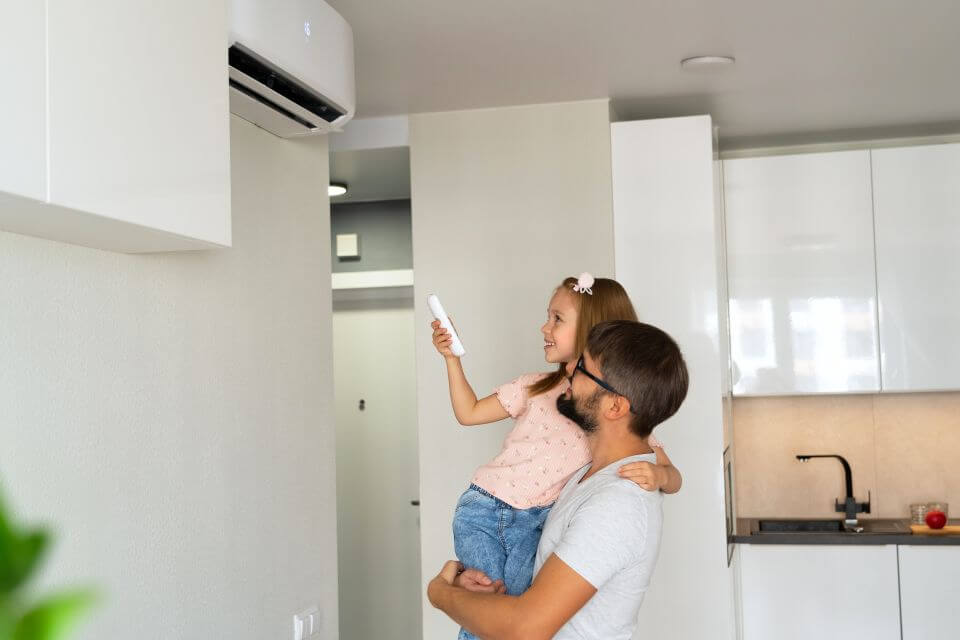Just when you think you have a handle on the different types of advertising for your business, something new comes along.
If you think about how you consume information these days, it’s difficult not to think about at-home entertainment. How much time have you spent at your computer, watching videos purely for entertainment? Or gathered around the television to watch your favorite shows?
You’re not alone. Especially this past year, as we stayed in place and spent more time than ever inside our homes, we rely on entertainment we can stream to our favorite devices. A Conviva report on Streaming in the Time of Coronavirus shows that streaming in the US is up 26 percent. And with Smart TVs and internet-powered televisions becoming the norm, those numbers are only going to rise.
What is connected TV?
Connected TV refers to televisions with an internet connection that can load or stream different types of digital content.
This can include Smart TVs, where the internet connection is built in. It can also include standard televisions that are connected via internet or smart device, which include things like gaming consoles like Playstation, internet-capable DVD players, or connected devices like Roku.
Why connected TV might matter to your bottom line
Just a few decades ago, it was easy to capture attention with a commercial on one of three major networks. Those days are gone, replaced by entertainment streaming from many different venues.
Still, there are a few big players in this new way of entertainment. YouTube, Hulu, and Roku currently control half of the connected TV revenue, with YouTube expected to grow to 39 percent of the market share by 2022.
These offer new ways of bringing content to followers. It also opens up unique opportunities for advertisers.
In general, there are three different types of connected TV ads:
In-stream video ads
You may have seen these unskippable ads that play before you can consume the program. They are no more than 30 seconds long, and a great way to get a message out to people that fit your demographics.
Interactive ads
These ads are looking for action. They want you to click to gain more information. Maybe you offer a coupon for a new product coming to market; clicking will bring viewers to a landing page for a discount or free offer.
Home screen placement ads
The simplest can sometimes be the most effective. These stagnant ads might have a “learn more” button that vies for attention for a few seconds before the entertainment starts.
Dig Deeper
Digital Marketing Or Traditional Marketing – Which Should You Be Using?
Do You Know What Your Online Reputation Says About You?
Why might connected TV advertising work for you
As with other types of marketing, your ultimate goal is to reach your target audience and drive them into action. Know your audience well. And if they are consuming information on connected TV networks, this opportunity may be ripe for your business.
If you’ve ever advertised on television, you could only target based on context. Your ad would be placed with a show, so it was important to understand the demographics of who was watching.
With connected TV ads, you have a lot more control. You can dive deep into targeting your audience, profile who is viewing your ads, and create dynamic ad platforms that follow their journey throughout the process.
Connected TV advertising might be for you if you’re looking for:
Precise targeting
For the same reason marketers love advertising on places like Facebook and Google, you’ll find placing ads on connected TV works in a similar manner. In order to consume anything on connected TV, you must first login and create a profile. That gives you, the marketer, the opportunity to create targeted ads based on demographics: zip code, interests, device used, or even online behavior.
Only want your content shown at a specific time of day? You can do that. You can also combine it with other marketing methods, such as retargeting. Whether you’re boosting awareness or driving traffic for conversion, there are many ways you can utilize information to get the viewers you’re looking for.
More views
One of the biggest benefits of using connected TV ads is the fact that people consume it on-demand. That means they are more engaged because they’ve actively made a choice to be there. They sit through ads because they want what is behind the ad itself.
Plus, as a marketer, you can easily track how many users actually saw your ad, and determine the interaction that happened over time. This allows you to tweak your ad, make it more relatable, and reach out to your target audience in new ways.
More ads
If you’re familiar with television advertising, you know creating one advertisement can eat up an entire year’s budget quickly. Connected TV ads can be created economically, meaning you can experiment with the content, change it up, and test it along the way.
Try different call-to-action content. Play with different formats. The only thing you need to be aware of is to ensure you create ads for all screen types. If it doesn’t show up right on a device, it won’t sell. But you can track that too. If most viewers use a specific digital device – tablets, for example – you can ensure your content presents well in that format.
Better audiences
You only have to think about your own behavior to realize most people do what they can to avoid ads. They change radio stations at the first sound of an ad. They hit the mute button between segments of their favorite shows.
With a smarter audience, you have to be smarter as a marketer. With connected TV ads, you can.
Select unique audiences that have the highest potential for consuming what you have to offer. When you clearly define your goals, you can find the perfect audience to suit your needs. That leads to more satisfaction and greater action on the content you create.
How to get started with connected TV ads
If you’re in marketing, creating a connected TV ad is no different than planning other campaigns. You have to define your marketing objectives, set up your goals, and create a plan.
Define your target audience
If you understand their purchasing behavior, you can be in specific places to reach out and talk directly to them.
Decide what ads are best
With a demographic in mind, you can create ad sets that work best for the audience, and within the content they are viewing it in. An ad on a Roku stream may be different than what you use with other devices.
Monitor your metrics
Like other digital ads, you can monitor your metrics in real-time. Use split testing to compare for future campaigns, and to bring in a more qualified customer that’s ready to do business with you.
Have you tried connected TV ads for your business?




